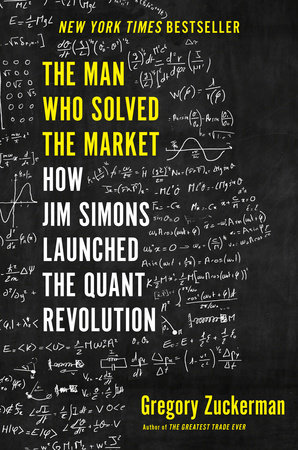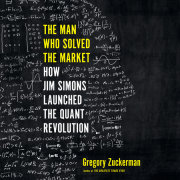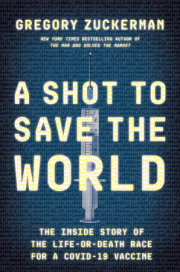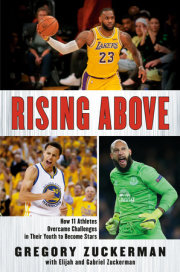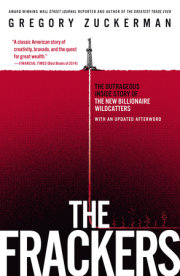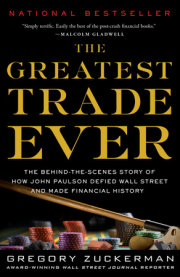Introduction
You do know— no one will speak with you, right?”
I was picking at a salad at a fish restaurant in Cambridge, Massachusetts, in early September 2017, trying my best to get a British mathematician named Nick Patterson to open up about his former company, Renaissance Technologies. I wasn’t having much luck.
I told Patterson that I wanted to write a book about how James Simons, Renaissance’s founder, had created the greatest moneymaking machine in financial history. Renaissance generated so much wealth that Simons and his colleagues had begun to wield enormous influence in the worlds of politics, science, education, and philanthropy. Anticipating dramatic societal shifts, Simons harnessed algorithms, computer models, and big data before Mark Zuckerberg and his peers had a chance to finish nursery school.
Patterson wasn’t very encouraging. By then, Simons and his representatives had told me they weren’t going to provide much help, either. Renaissance executives and others close to Simons—even those I once considered friends—wouldn’t return my calls or emails. Even archrivals begged out of meetings at Simons’s request, as if he was a Mafia boss they dared not offend.
Over and over, I was reminded of the iron-clad, thirty-page nondisclosure agreements the firm forced employees to sign, preventing even retirees from divulging much. I got it, guys. But come on. I’d been at the Wall Street Journal for a couple of decades; I knew how the game was played. Subjects, even recalcitrant ones, usually come around. After all, who doesn’t want a book written about them? Jim Simons and Renaissance Technologies, apparently.
I wasn’t entirely shocked. Simons and his team are among the most secretive traders Wall Street has encountered, loath to drop even a hint of how they’d conquered financial markets, lest a competitor seize on any clue. Employees avoid media appearances and steer clear of industry conferences and most public gatherings. Simons once quoted Benjamin, the donkey in Animal Farm, to explain his attitude: “ ‘God gave me a tail to keep off the flies. But I’d rather have had no tail and no flies.’ That’s kind of the way I feel about publicity.”
I looked up from my meal and forced a smile.
This is going to be a battle.
I kept at it, probing defenses, looking for openings. Writing about Simons and learning his secrets became my fixation. The obstacles he put up only added allure to the chase.
There were compelling reasons I was determined to tell Simons’s story. A former math professor, Simons is arguably the most successful trader in the history of modern finance. Since 1988, Renaissance’s flagship Medallion hedge fund has generated average annual returns of 66 percent, racking up trading profits of more than $100 billion (see Appendix 1 for how I arrive at these numbers). No one in the investment world comes close. Warren Buffett, George Soros, Peter Lynch, Steve Cohen, and Ray Dalio all fall short (see Appendix 2).
In recent years, Renaissance has been scoring over $7 billion annually in trading gains. That’s more than the annual revenues of brand- name corporations including Under Armour, Levi Strauss, Hasbro, and Hyatt Hotels. Here’s the absurd thing— while those other companies have tens of thousands of employees, there are just three hundred or so at Renaissance.
I’ve determined that Simons is worth about $23 billion, making him wealthier than Elon Musk of Tesla Motors, Rupert Murdoch of News Corp, and Laurene Powell Jobs, Steve Jobs’s widow. Others at the firm are also billionaires. The average Renaissance employee has nearly $50 million just in the firm’s own hedge funds. Simons and his team truly create wealth in the manner of fairy tales full of kings, straw, and lots and lots of gold.
More than the trading successes intrigued me. Early on, Simons made a decision to dig through mountains of data, employ advanced mathematics, and develop cutting- edge computer models, while others were still relying on intuition, instinct, and old- fashioned research for their own predictions. Simons inspired a revolution that has since swept the investing world. By early 2019, hedge funds and other quantitative, or quant, investors had emerged as the market’s largest players, controlling about 30 percent of stock trading, topping the activity of both individual investors and traditional investing firms.2 MBAs once scoffed at the thought of relying on a scientific and systematic approach to investing, confident they could hire coders if they were ever needed. Today, coders say the same about MBAs, if they think about them at all.
Simons’s pioneering methods have been embraced in almost every industry, and reach nearly every corner of everyday life. He and his team were crunching statistics, turning tasks over to machines, and relying on algorithms more than three decades ago— long before these tactics were embraced in Silicon Valley, the halls of government, sports stadiums, doctors’ offices, military command centers, and pretty much everywhere else forecasting is required.
Simons developed strategies to corral and manage talent, turning raw brainpower and mathematical aptitude into astonishing wealth. He made money from math, and a lot of money, at that. A few decades ago, it wasn’t remotely possible.
Lately, Simons has emerged as a modern- day Medici, subsidizing the salaries of thousands of public- school math and science teachers, working to cure autism and expand our understanding of the origins of life. His efforts, while valuable, raise the question of whether one individual should enjoy so much influence. So, too, does the clout of his senior executive, Robert Mercer, who is perhaps the individual most responsible for Donald Trump’s presidential victory in 2016. Mercer, Trump’s biggest financial supporter, plucked Steve Bannon and Kellyanne Conway from obscurity and inserted them into the Trump campaign, stabilizing it during a difficult period. Companies formerly owned by Mercer and now in the hands of his daughter Rebekah played key roles in the successful campaign to encourage the United Kingdom to leave the European Union. Simons, Mercer, and others at Renaissance will continue to have broad impact for years to come.
The successes of Simons and his team prompt a number of challenging questions. What does it say about financial markets that mathematicians and scientists are better at predicting their direction than veteran investors at the largest traditional firms? Do Simons and his colleagues enjoy a fundamental understanding of investing that eludes the rest of us? Do Simons’s achievements prove human judgment and intuition are inherently flawed, and that only models and automated systems can handle the deluge of data that seems to overwhelm us? Do the triumph and popularity of Simons’s quantitative methods create new, overlooked risks?
I was most fascinated by a striking paradox: Simons and his team shouldn’t have been the ones to master the market. Simons never took a single finance class, didn’t care very much for business, and, until he turned forty, only dabbled in trading. A decade later, he still hadn’t made much headway.
Heck, Simons didn’t even do applied mathematics, he did theoretical math, the most impractical kind. His firm, located in a sleepy town on the North Shore of Long Island, hires mathematicians and scientists who don’t know anything about investing or the ways of Wall Street. Some are even outright suspicious of capitalism. Yet, Simons and his colleagues are the ones who changed the way investors approach financial markets, leaving an industry of traders, investors, and other pros in the dust. It’s as if a group of tourists, on their first trip to South America, with a few odd- looking tools and meager provisions, discovered El Dorado and proceeded to plunder the golden city, as hardened explorers looked on in frustration.
Finally, I hit my own pay dirt. I learned about Simons’s early life, his tenure as a groundbreaking mathematician and Cold War code- breaker, and the volatile early period of his firm. Contacts shared details about Renaissance’s most important breakthroughs as well as recent events featuring more drama and intrigue than I had imagined. Eventually, I conducted more than four hundred interviews with more than thirty current and former Renaissance employees. I spoke with an even larger number of Simons’s friends, family members, and others who participated in, or were familiar with, the events I describe. I owe deep gratitude to each individual who spent time sharing memories, observations, and insights. Some accepted substantial personal risk to help me tell this story. I hope I rewarded their faith.
Even Simons spoke with me, eventually. He asked me not to write this book and never truly warmed to the project. But Simons was gracious enough to spend more than ten hours discussing certain periods of his life, while refusing to discuss Renaissance’s trading and most other activities. His thoughts were valuable and appreciated.
This book is a work of nonfiction. It is based on first- person accounts and recollections of those who witnessed or were aware of the events I depict. I understand that memories fade, so I’ve done my best to check and confirm every fact, incident, and quote.
I’ve tried to tell Simons’s story in a way that will appeal to the general reader as well as to professionals in quantitative finance and mathematics. I will refer to hidden Markov models, kernel methods of machine learning, and stochastic differential equations, but there also will be broken marriages, corporate intrigue, and panicked traders.
For all his insights and prescience, Simons was blindsided by much that took place in his life. That may be the most enduring lesson of his remarkable story.
*Mercer no longer is Renaissance’s co‑CEO but he remains a senior employee of the firm.
Copyright © 2019 by Gregory Zuckerman. All rights reserved. No part of this excerpt may be reproduced or reprinted without permission in writing from the publisher.

